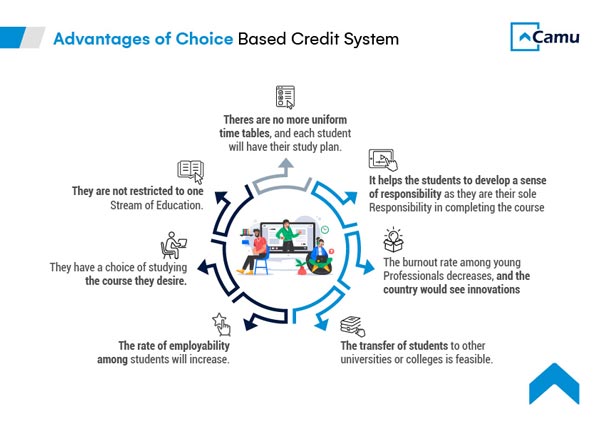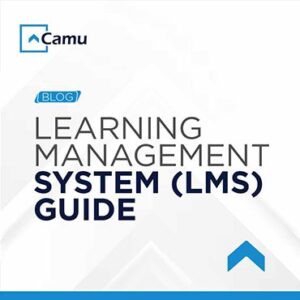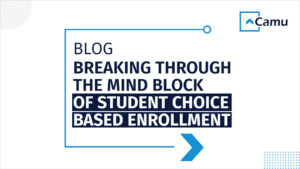Choice Based Credit System guide
“Education is the mother of leadership.”–
Wendell Willkie
Education is the most potent weapon that can change the world. It paves the way to empathetic leadership. Education must be a culmination of the skillset development of an individual. It is instrumental in preparing the person for the future ahead. Having the right to education is a fundamental right that helps eradicate poverty and unemployment. However, the unemployment rate in India is still prevalent. Companies require proper qualifications while hiring. It is not accessible if you are an engineering graduate who wants to foray into marketing or strategy. Either you get rejected or be asked to qualify for the job professionally. There is a lot of time lost in the process. Several socio-economic and financial factors influence the student’s life ahead, leading to early burnout for professionals across all sectors.
Choice Based Credit System – CBCS is a Pedagogical approach that facilitates the students to choose their preference of core subjects, elective courses, skillset, or global-based elective courses. The CBCS system enables the students to get multi-disciplinary education. For instance, in the CBCS system, an engineering student can take up arts, humanities, law, or history as subjects in the global-based elective courses. CBCS was a universal education model followed by the foreign countries, wherein you could have probably heard of a law student studying history and clinical psychology. Choice Based Credit System in higher education was first introduced by the IGCSE and ICSE syllabus (the international Cambridge syllabus), wherein the students had the Choice of studying science and arts or humanity and computer science.
CBCS at the school level helps the students explore different career courses for their college. The subjects in CBCS are provided in different categories:
a. Core subjects:
A core subject remains the crux of the introductory education course chosen by the student. Core subject credits are mandatory to complete the course.
b. Elective course:
These subjects are more generic but may or may not be related to the core subject, and these subjects help discover different topics that would otherwise be out of reach for the students.
c. Skillset or globally based elective courses:
These courses are additional courses taken up by the students out of their interest to gain knowledge. These courses comprise subjects that help the students climb their career ladder.
How Indian Education System Implemented Choice Based Credit System:
In the Indian context, the marking system puts massive pressure on the students. The mental health of both parent and the student are at risk. So, our Indian government introduced the Cumulative Grade Points Average (CGPA) system from CBSE at the school level and at the university level. Although the CGPA system helps reduce the pressure on the students, there was a lack of relationship between the education, employment, and skills of the students. The employability skills were neglected entirely, and students started finding it hard to cope. There was a massive gap between the academic knowledge, skillset acquired, passion, and required job skills. So, the University Grants Commission (UGC) introduced the Choice Based Credit System (CBCS) in 2015.
The Indian education system can be broadly classified into primary, secondary, and senior or higher education levels. Primary education consists of Montessori/kindergarten to 5th standard. Secondary education includes the 6th to 10th standard. Senior or higher education includes 11th, 12th, and university studies. In the current education system, the students aren’t given a Choice until the 10th for the courses they opt for. However, in higher education, they have a minimum bandwidth of Choice to make from. We believe that students are not informed enough to decide what they want to pursue at a very young age of 12-15 years. But, the CBCS system avails the students of diverse options. It allows them to explore at their high school level (11th and 12th), facilitating a more comprehensive plethora of opportunities for them to choose from at their university. Only a few schools have adopted the CBCS system fully and partially. India is yet to undergo this significant paradigm shift in providing quality education at the learner’s will.
Advantages of CBCS:
Choice Based Credit System, an internationally accepted system, gives a new perspective to education. The transfer of power from tutors to learners creates various avenues of development. The institution, students, and the nation have advantages from the Choice Based Credit System.

For students:
The advantages of Choice Based Credit Systemfor the students are liberating.
- They have a choice of studying the course they desire. For example, you can choose medicine as my core subject and study history or clinical psychology. It helps the students to discover various career paths for themselves and also provides a venue to choose a different stream of higher studies.
- The rate of employability among students will increase.
- They are not restricted to one stream of education. Instead, they can explore to find their passion and pursue them further.
- The burnout rate among young professionals decreases, and the country would see innovations soaring sky high.
- The unemployment rate will significantly decrease as the students will be professionally qualified. A software engineer can land a primary executive-level branding of marketing sector job because of the choice-based credit system.
- The transfer of students to other universities or colleges is feasible.
- The students can study from anywhere, from campus, off-campus (digital campus), and the model can be used during pandemics where there is limited access to physical entities.
- It helps the students to develop a sense of responsibility as they are their sole responsibility in completing the course
- The students can choose what they study and from which faculty.
- The semester pattern helps students to complete the course earlier than before or take it slow as per their convenience.
- There are no more uniform timetables, and each student will have their study plan.
- The students can support study and work at the same time at a very early point in their career.
- They don’t need to wait until graduation to get a job.
Institutions can follow a uniform system throughout the country or region with the CBCS system. It makes the transferring procedure easy for the institutions as the credits only must be transferred. The students also get a wide array of opportunities to study from. The institution empowers the students’ Choices and helps them learn from the best.
Disadvantages of CBCS:
CBCS, how it has advantages, also has some disadvantages. If there is no integrated learning management system in place, it becomes challenging to manage the data and students’ information along with the different courses and faculty details. The institutions must have faculty for the subjects that have a negligible number of students. Thus, incurring additional costs for the management.
The universities that do not have proper reach to resources for their students will suffer from the choice-based credit system. The actual marks of the students can never be estimated for betterment.
How does Camu’s CBCS module help?
Choice Based Credit System in higher education isn’t possible without a unified Student Information System (SIS) and Learning Management System (LMS). Given the workload of a CBCS for teachers and students, it is almost impossible to manage the whole data and assessment methods manually. Camu’s digital campus has SIS and LMS that help establish a seamless CBCS for your university/educational campus.
Camu’s software helps the institution run a student-centric LMS platform that can be easily managed and leveraged for a seamless experience for the teachers, institutions, and students. The course offering can be created in the software once the institution has a ready set of core and elective subjects assigned. Camu’s system enables the students to select any course and complete the credits required for the particular program. The institution can set the minimum credits needed to finish the degree and have muliple plans based on majors and minor subjects.
Camu has a simple dashboard that can help the faculties and the students to understand their progress over their Academic Journey. The CBCS of Camu also helps in effective academic planning, Course registration management, timetable management, attendance management, grading as per CBCS, and reports corresponding to the students’ activities. The universities can opt to have an LMS and SIS with online and offline classes to enable tracking the progress of the students.








